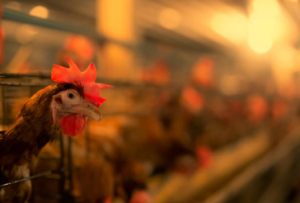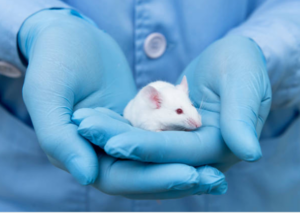The Role of Laws and Regulations in Protecting Animals

Animals, whether pets, farm animals, or wildlife, share our planet and have an inherent right to live free from cruelty and harm. To ensure the welfare of animals, governments around the world have established laws and regulations that address various aspects of animal protection. In this blog, we’ll explore the importance of legislation for animal welfare, its evolution, and its impact on our society and the animal kingdom.
The concern for animal welfare is not a recent development; it has a rich history dating back centuries. In the 17th century, philosopher René Descartes famously declared that animals lacked souls and, therefore, couldn’t feel pain. This belief influenced the way animals were treated and justified cruel practices.
Thankfully, the tide began to turn in the 19th century with the founding of the Society for the Prevention of Cruelty to Animals (SPCA) in the United Kingdom. This marked the birth of organized efforts to protect animals and led to the passing of the world’s first animal welfare legislation, known as Martin’s Act, in 1822.
The Evolution of Animal Welfare Legislation
The 20th Century: A Turning Point
The 20th century saw significant progress in animal welfare legislation. The United States passed the Animal Welfare Act in 1966, establishing guidelines for the treatment of animals used in research and exhibition. Meanwhile, the United Kingdom passed the Dangerous Wild Animals Act in 1976, regulating the ownership of exotic and dangerous animals.
The 21st Century: A New Era
In recent years, there has been a global push for stronger animal welfare legislation. Countries are recognizing the need for comprehensive laws that protect animals from cruelty, neglect, and exploitation.
Key areas of legislation in the 21st century include:
- Animal Cruelty Laws: Stricter penalties and broader definitions of animal cruelty are being introduced to hold abusers accountable for their actions.
- Animal Testing Regulations: Many countries are adopting policies to reduce animal testing in favor of alternative methods.
- Wildlife Protection: Efforts are being made to combat illegal wildlife trade and poaching through international agreements such as CITES (Convention on International Trade in Endangered Species of Wild Fauna and Flora).
- Factory Farming: Legislation addressing the conditions in which farm animals are raised, including bans on cruel practices like gestation crates and battery cages, is becoming more prevalent.
- Animal Welfare in Entertainment: Many countries are tightening regulations on the use of animals in entertainment, such as circuses and marine parks.
- Companion Animal Protections: Regulations for the sale and treatment of pets are being strengthened to prevent puppy mills and ensure responsible breeding.

The Impact of Animal Welfare Legislation
Animal welfare legislation has brought about significant positive changes in several crucial areas, ensuring the humane treatment and protection of animals across the globe. Here’s a closer look at the multifaceted impact of these laws:
1. Prevention of Cruelty
Animal cruelty laws have been pivotal in setting clear standards for the humane treatment of animals and establishing consequences for those who violate these standards. This legal framework has significantly reduced instances of abuse, neglect, and cruelty toward animals.
a. Reduced Animal Abuse:
Legislation serves as a deterrent, making it more likely for those engaging in cruel acts towards animals to face legal consequences. This has led to a reduction in animal abuse cases, as people are more aware of the legal repercussions of their actions.
b. Stricter Penalties:
Animal welfare laws have evolved to include stricter penalties for offenders. These penalties may range from fines and probation to imprisonment, depending on the severity of the crime. This has further discouraged acts of cruelty.
2. Increased Awareness
Animal welfare legislation has played a crucial role in raising public awareness of animal rights and welfare. As people become more informed about the laws in place to protect animals, they are more likely to support and advocate for their humane treatment.
a. Educational Initiatives:
Legislative efforts often include educational initiatives designed to inform the public about proper animal care, responsible pet ownership, and the importance of treating animals with kindness.
b. Advocacy and Outreach:
Animal welfare organizations and advocates use these laws as a foundation for outreach and advocacy efforts, fostering a greater understanding of animal rights and welfare.
3. Improved Animal Testing Practices
Regulations on animal testing have encouraged the development and implementation of alternative testing methods. This shift has led to a decrease in the number of animals used in experiments and a reduction in their suffering.
a. 3Rs Principle:
The principles of Replacement, Reduction, and Refinement (the 3Rs) have become central to animal testing regulations. These guidelines promote the replacement of animals with alternative methods, the reduction of the number of animals used, and the refinement of testing procedures to minimize suffering.
b. Technological Advancements:
The commitment to finding alternatives to animal testing has led to significant technological advancements in vitro testing, computer modeling, and other innovative methods that reduce reliance on animal subjects.
4. Habitat and Wildlife Protection
Legislation focused on wildlife protection addresses the preservation of endangered species and their natural habitats. These laws are essential for the conservation of biodiversity and the safeguarding of iconic species from extinction.
a. CITES and International Agreements:
International agreements, such as the Convention on International Trade in Endangered Species of Wild Fauna and Flora (CITES), regulate and monitor international trade in endangered species. These agreements help combat illegal wildlife trade and protect at-risk species.
b. National Laws for Conservation:
Individual nations often enact laws and regulations to protect their native wildlife, such as the Endangered Species Act in the United States. These laws have been instrumental in preventing the extinction of numerous species.
5. Better Conditions for Farm Animals
Legislation addressing the conditions in which farm animals are raised has resulted in notable improvements in the treatment of animals in the agricultural industry. These laws have introduced larger and more humane living conditions for animals and phased out cruel practices.
a. Reduced Confinement:
Legislation has prompted the phasing out of inhumane practices like gestation crates for pigs, battery cages for hens, and veal crates for calves. Farm animals now have more space and improved living conditions.
b. Humane Slaughter Practices:
Regulations have also been introduced to ensure that the process of slaughtering animals is as humane as possible, minimizing their stress and suffering.
6. Responsible Pet Ownership
Laws governing the sale and treatment of pets have been strengthened to prevent irresponsible breeding and pet sales, ultimately promoting responsible pet ownership.
a. Puppy Mills:
Legislation has sought to shut down puppy mills that engage in inhumane breeding practices, providing better lives for the animals involved.
b. Adoption and Licensing:
Regulations may require pet owners to obtain licenses and encourage adoption from animal shelters, reducing the number of animals in shelters and fostering responsible pet ownership.

Challenges and Ongoing Issues
While animal welfare legislation has made significant progress in improving the lives of animals, it faces several challenges and ongoing issues that must be addressed to ensure continued success.
1. Enforcement
Enforcing animal welfare laws can be a complex and challenging task. Several factors contribute to this issue:
a. Limited Resources:
Many animal welfare enforcement agencies operate with limited resources, making it difficult to investigate and prosecute animal cruelty cases effectively. Adequate funding and staffing are essential for effective enforcement.
b. Reporting and Awareness:
Not all cases of animal cruelty are reported or recognized, which can hinder enforcement efforts. Public awareness campaigns and reporting mechanisms must be improved to ensure that all instances of cruelty are addressed.
c. Legal Loopholes:
Some individuals may exploit legal loopholes, making it difficult to prosecute them for actions that cause harm to animals. Closing these loopholes is essential for effective enforcement.
2. Global Consistency
Animal welfare standards can vary significantly from one country to another, leading to issues related to the global movement of animals and animal products:
a. International Trade:
Inconsistent animal welfare standards can complicate international trade in animals and animal products. Efforts must be made to align these standards to ensure the humane treatment of animals worldwide.
b. Legal Export-Import Loopholes:
Loopholes in international trade laws may enable the exploitation of animals in countries with weaker regulations. International agreements are essential to prevent the abuse of these legal gaps.
3. Evolving Practices
Advancements in science and technology, as well as evolving societal norms, introduce new ethical questions related to animal welfare:
a. Genetic Modification:
The use of genetically modified animals raises concerns about their welfare, health, and potential suffering. Legislation must keep pace with these technological developments.
b. Cloning:
Cloning practices raise questions about the welfare of animals involved in cloning experiments. Clear guidelines are needed to ensure humane treatment.
c. Animal-Human Hybrids:
Emerging technologies, such as creating animal-human hybrids for medical research, introduce ethical and welfare dilemmas. Legislation is required to address these complex issues.
4. Public Attitudes
Changing public attitudes and behaviors towards animals remains a long-term challenge, and it’s essential to shift societal norms to ensure their better treatment:
a. Cultural Practices:
In some regions, cultural practices involve the use of animals in ways that may be considered inhumane by global standards. Balancing cultural respect with animal welfare is a complex challenge.
b. Education and Advocacy:
Continued education and advocacy efforts are crucial to changing public attitudes. Animal welfare organizations and individuals play a vital role in this process.
c. Policy Implementation:
Even with strong legislation, the effective implementation of animal welfare policies depends on public support and adherence. Fostering a culture of respect for animal rights is an ongoing challenge.

The Role of Advocacy
Advocacy groups and individuals play a crucial role in pushing for stronger animal welfare legislation. They work tirelessly to raise awareness, lobby for change, and hold authorities accountable. These organizations and individuals have been instrumental in the progress made in animal welfare over the years.
Legislation for animal welfare has come a long way, providing important protections and driving change in the treatment of animals. However, there is still much work to be done to ensure that animals live lives free from cruelty, neglect, and exploitation.
As individuals, we can contribute to these efforts by supporting and advocating for strong animal welfare legislation, adopting responsible and humane practices in our own lives, and raising awareness about the importance of treating animals with compassion and respect. By working together, we can continue to make strides in improving the lives of animals around the world and building a more compassionate and ethical society.

